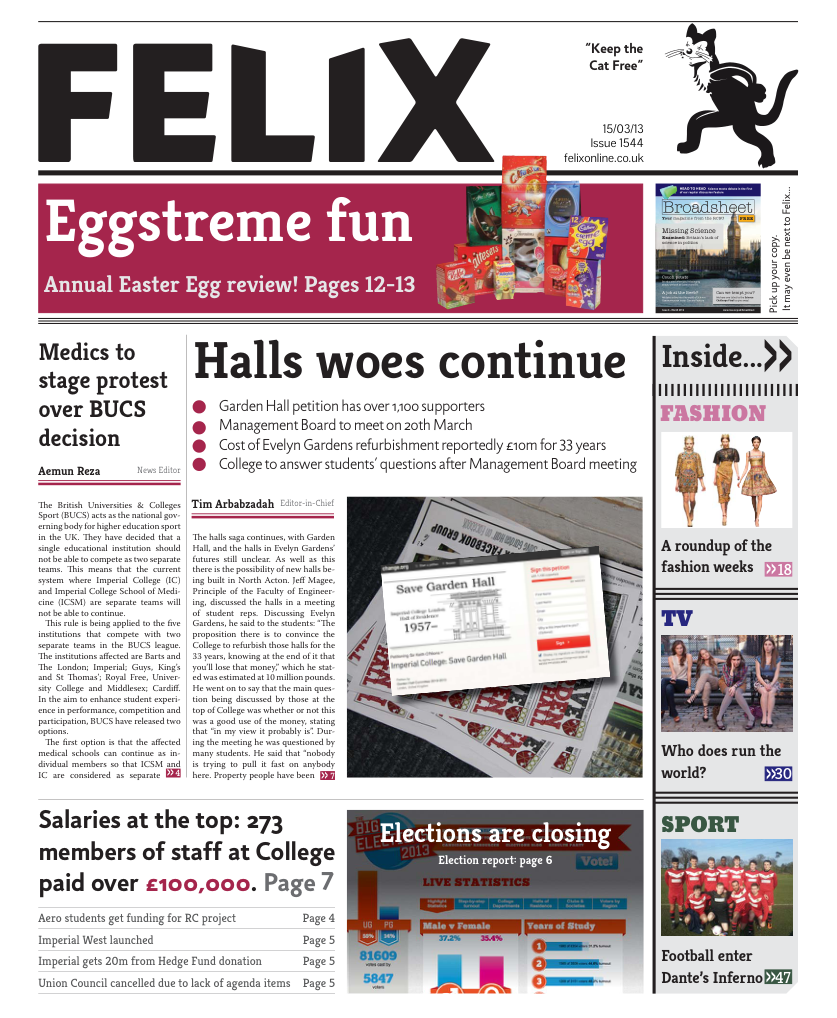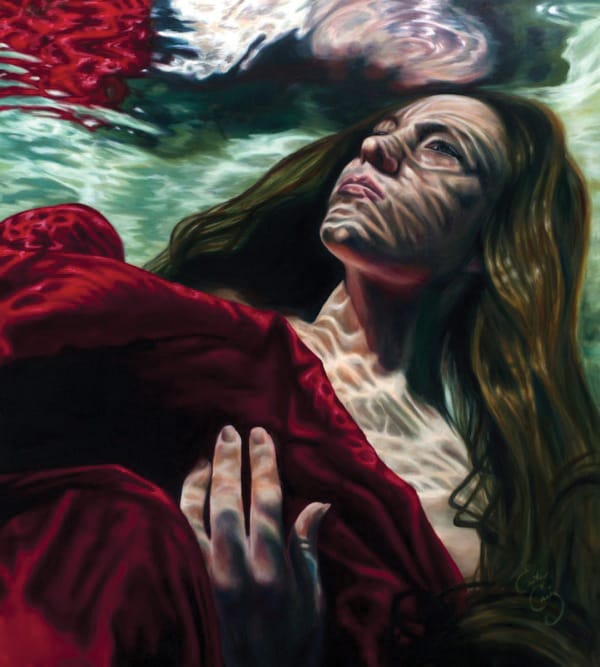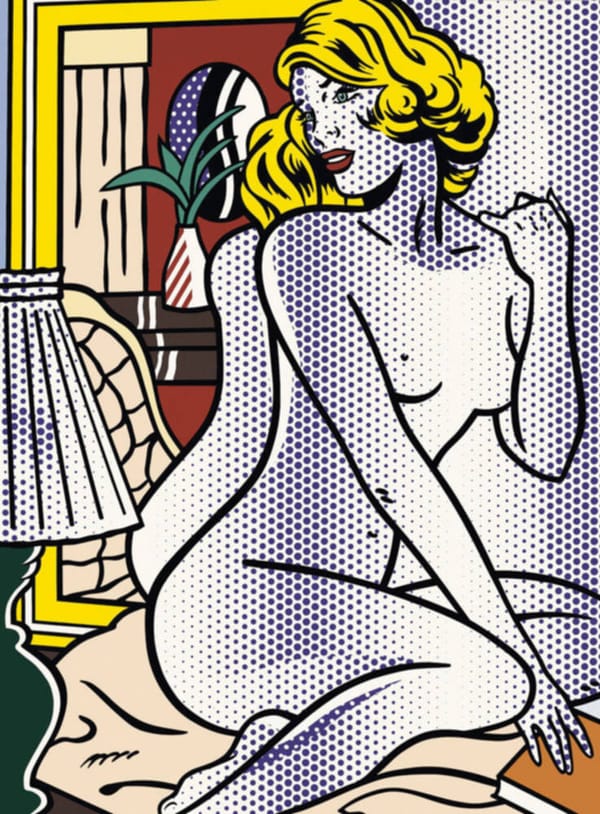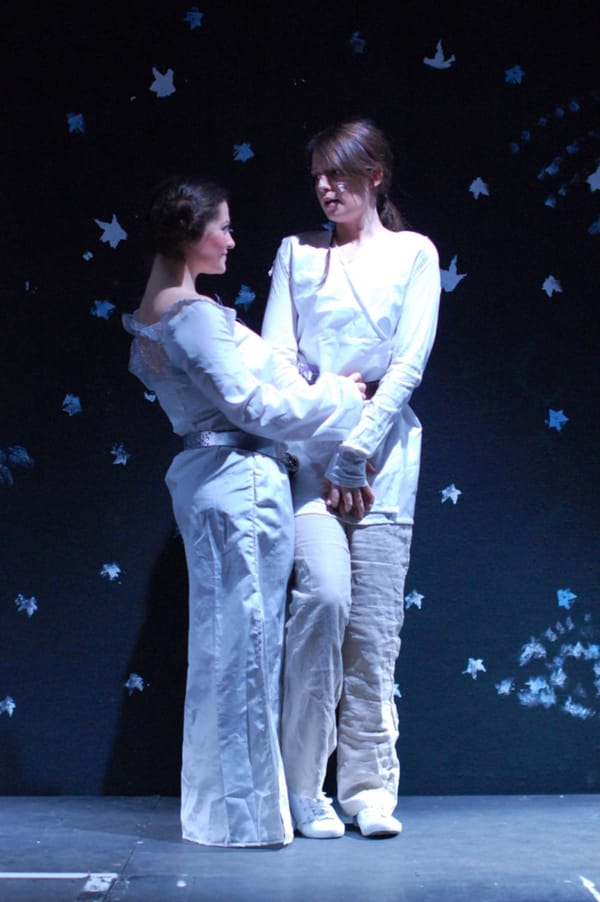Lady Dada’s bad romance
Fred Fyles takes a trip to the Barbican

The Barbican’s art gallery is haunted by the ghosts of avant-garde. Possessed pianos play atonal compositions, while invisible dancers pitter-patter across the halls, and long-dead voices call out in French. This is the soundscape against which the exhibition The Bride and the Bachelors is set, forming the mise en scène for a production which tells the story of a Dadaist giant and the New York scene he inspired. In this tale, the ‘Bride’ is Marcel Duchamp, the radical French artist whose ‘readymades’ changed the art world forever. The ‘Bachelors’ courting him are the four titans of 1960s American avant-garde: Jasper Johns, Merce Cunningham, John Cage, and Robert Rauschenberg. The exhibition shows the influence these artists had on one another, and the enormous impact Duchamp’s philosophy had on the arts as a whole
Duchamp’s magnum opus, The Bride Stripped Bare by Her Bachelors, Even (The Large Glass), forms the focal point of the exhibition; consisting of an ethereal, geometric ‘bride’ and her nine mechanical ‘bachelors’, sandwiched between two shattered panes of glass, the work is an exercise in decay. Random encounters with dust, dirt and grime have been left in by Duchamp, making the piece a study in chance. First conceived of in 1913, the piece was not completed until 1923, and accompanying the piece are reams of notes, studies and paintings depicting the various components of the glass. Several of Duchamp’s most famous works, including Fountain and Bicycle Wheel, are shown next to the piece, and serve as an introduction into the artist’s world.
Duchamp was the central nucleus of a small group of New York artists, brought together through the Merce Cunningham Dance Company, through which they collaborated. Merce Cunningham was the choreographer, John Cage was the Music Director, Robert Rauschenberg acted as the Resident Designer, and later Jasper Johns became the company’s Artistic Advisor. The show explores this collaboration, and how the artists influenced one another’s work. A large portion of the opening gallery is taken up by a stage, upon which dancers from the Merce Cunningham Dance Studio perform to a soundscape created by French artist and film-maker Philippe Parreno; consisting of works by Cage, Duchamp, and Parreno himself. This cycling of live and pre-recorded sounds introduces an element of chance, allowing the exhibits to change over time.
Chance was a key theme that brought the artists together. Starting with Duchamp’s experiments in decay and motion, during which he let strings drop throughthe air before photographing how they landed, the exhibition then moves through Cage’s ‘chance operations’, dictated by the I Ching – a Chinese divination system. Cage would allow the I Ching system to determine the structure of his music, resulting in unpredictable, atonal compositions. Cunningham later used the I Ching to determine where his dancers would move upon the stage, introducing chance into a discipline that had previously been based upon control and coordination.
While this system of composition may seem revolutionary, the exhibition shows that Duchamp preceded these by about 40 years with his Erratum Musical, in which syllables from the French definition for imprimer were randomly paired to notes pulled out of a hat, creating a completely random piece of music.
This Erratum Musical is a perfect example of a Duchamp readymade – a piece in which Duchamp would take existing, or found objects, and turn them into art. The most famous readymade piece is his Fountain, a urinal signed R. Mutt which was considered the starting point for Dadaism and caused outrage when it was created in 1917. The work is featured in the exhibition alongside Bicycle Wheel, an upturned wheel attached to a stool. These readymades formed the inspiration for the sets Rauschenberg designed for Cunningham, and influenced his own Combine paintings, made from a mixture of traditional media and found objects.
Taking this one step further, Rauschenberg later began to createsculptures from solely readymade objects; Music Box (Elemental Sculpture), created in 1953, consists of a nail studded box containing small pebbles, the name referencing the sound made when one shook the box. Johns also took inspiration from the world around him; from his paintings of American flags, targets, and numerals, to his sculptures of cans and tins, John – just like Duchamp before him – elevates the everyday to the avant-garde.
While John’s work fits into the themes of the exhibition, it is markedly different from those around it; as a direct precursor of what would become to be known as Pop Art, his pieces are more accessible – and more fun – than others in the exhibition, which has a heavy focus on Cage’s work. While it is completely possible to appreciate Cage’s pieces on a theoretical or philosophical level, they only really come alive when they are performed. Parreno’s mise en scène attempts to bring the magical qualities in Cage’s pieces by playing them throughout the exhibition, which would satisfy all but his hard-core fans. Unfortunately, the curators of the show decided to fill up a large portion of the upper levels with Cage’s manuscripts. Perhaps they felt that this is what visitors were really interested in, or perhaps they had reams of sheet music gathering dust in a back room, but when compared to Rauschenberg and John’s exuberant artworks, they simply fail to shine.
This exhibition succeeds in unravelling the invisible threads binding together five of the 20th Century’s most important contemporary artists, allowing us to see the influence they had upon each other; an influence that spanned the generations, as well as the different disciplines in art. For anyone with an interest in any of the artists features, or even those with a slight interest in the avant-garde, this exhibition is a must see. In less skilled hands, the exhibit may have seemed clunky, but Parreno succeeds in bringing all the artists together under one roof: the bride and her bachelors, bound together in holy matrimony.
Showing at the Barbican until June 9. Merce Cunningham Dance Company perform every Thursday evening, and at weekends.









